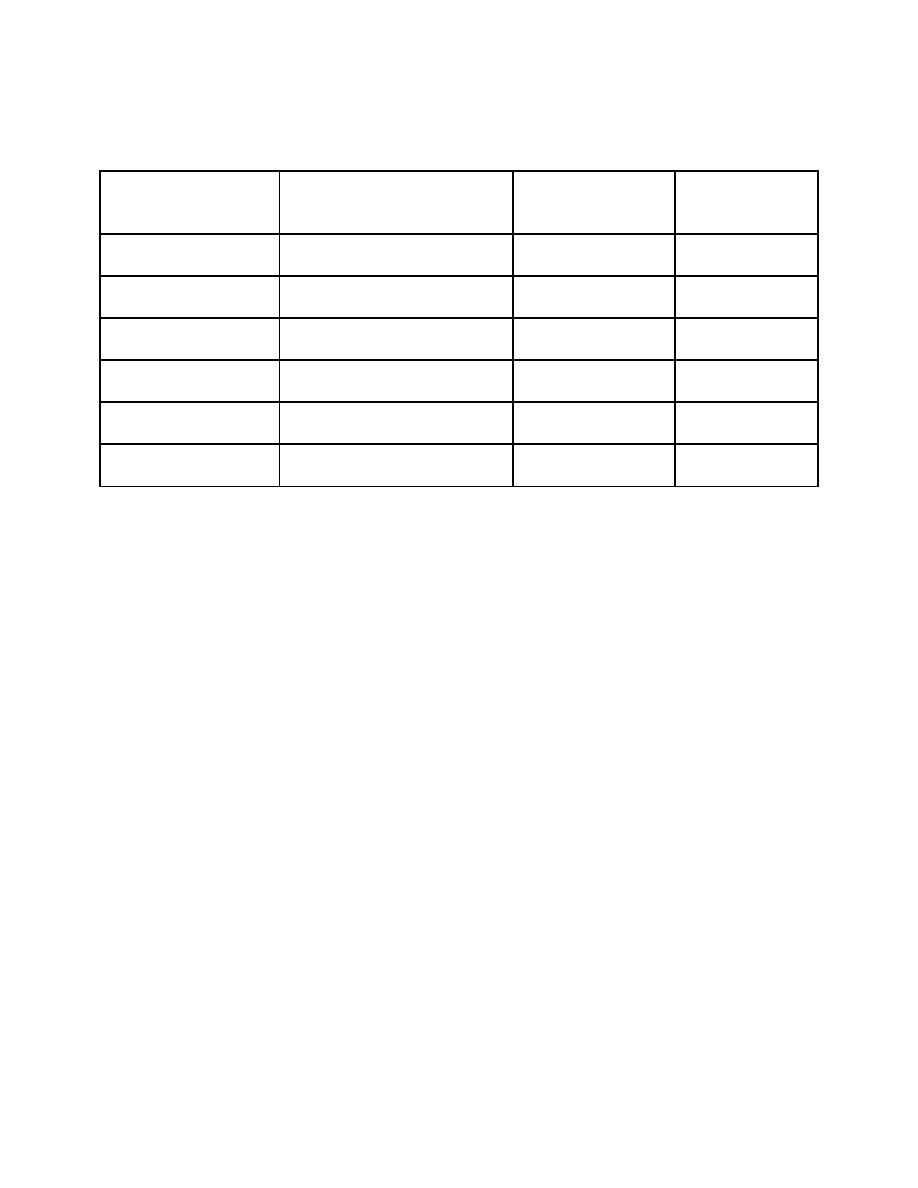
UFC 3-410-04N
25 October 2004
Table 5-1. Recommended Hood, Capture Velocity, and Air Pollution Device
Air Cleaning
Recommended
Operation (expected
Device
Capture Velocity
contaminant)
(see notes)
(m/s (fpm))
Hood Type
Chemical Mixing
Workbench (Figure 5-2)
0.51 m/s (100)
1
(vapors)
Lay up (Vapors)
Workbench/Floor Exhaust
0.51 m/s (100)
1
(Figure 5-3)
Spray up (Vapors)
Spray up Booth
0.51 m/s (100)
1
(Figure 5-4)
Grind,Cut,Saw
Workbench/Floor Exhaust
0.76 m/s (150)
2
(Particulate)
(Figure 5-3)
Cleanup (Vapors)
Ventilated Sink
0.51 m/s (100)
3 or 1
(Figure 5-5)
Hand Tools
LVHV Vacuum System
Not
2
(Particulate)
applicable
NOTES:
(1) Determined by the local air pollution regulatory agency,
(2) fabric collector, and
(3) substitute an aqueous emulsion cleaner for acetone.
5-4.2.1
Plenum Velocity. Design the plenum velocity at least one-half, but no
greater than, the velocity through the perforated plate or layered prefilter to create an
even airflow over the hood face. Design the hood-to-duct transition with an included
angle of no more than 90 degrees.
5-4.2.2
Hood Length. Specify that the length of the hood served by each
exhaust plenum will not exceed 2.44 m (8 ft). For example, hoods between 2.44 and
4.88 m (8 and 16 ft) in length will have two exhaust takeoffs. Provide cleanout doors in
the plenum to allow removal of accumulated particulate.
5-4.2.3
Portable Hand Tools. Use portable hand tools with LVHV vacuum
systems for sawing, cutting, and grinding on all work pieces. Ensure that the tools, with
their vacuum hoses, are properly sized for the work piece internal angles and curvature.
LVHV systems are described in paragraph 5-4.7.
5-3



 Previous Page
Previous Page
